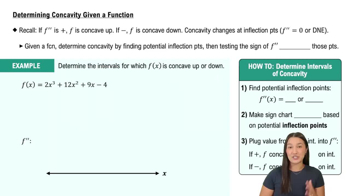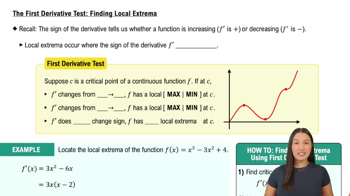114. Parabolas
b. When is the parabola concave up? Concave down?

 Verified step by step guidance
Verified step by step guidance Verified video answer for a similar problem:
Verified video answer for a similar problem:



 6:38m
6:38mMaster Determining Concavity from the Graph of f with a bite sized video explanation from Patrick
Start learning